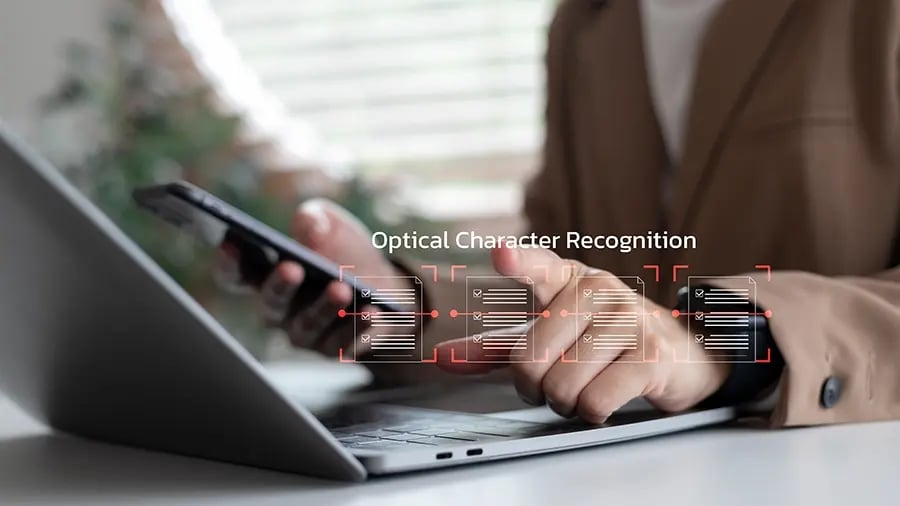
OCR Integration with ERP Software: Automating the CFO’s Desk
OCR Integration with ERP Software: Automating the CFO’s Desk
8:23
Published :

CFOs today operate under constant scrutiny. Boards demand tighter cost control, regulators expect bulletproof audit trails, and markets punish delays in reporting. Yet finance teams remain trapped in reconciliation loops, chasing exceptions and struggling to close books on time. The biggest hurdle isn't strategy, it's execution.
OCR systems have emerged as a starting point, converting paper invoices into digital records. But extraction alone doesn't solve the governance challenge. Deloitte's Finance 2025 study confirms that "mundane tasks will become easier to automate through ERP and other means," shifting finance from transaction processing toward planning and forecasting.
However, the urgency today is driven by broader change: the world of AI, digitization, and new compliance requirements such as e-invoicing mandates in India and across global markets. CFOs are moving beyond cost reduction to a new era of value creation through automation and data intelligence. Gen AI now augments traditional OCR by interpreting unstructured documents, codifying descriptions into accounting entries, and enabling automatic document generation in ERP systems.
The question isn't whether to automate, it's how deeply OCR and AI integration with ERP software can transform finance from a reporting function into a real-time control tower.
Optical character recognition does one thing well: it reads. Invoice headers, line items, and tax fields, all converted from image to text in seconds. This eliminates manual keying errors and speeds up accounts payable cycles dramatically.
But most standard OCR systems stop at data capture. It doesn't validate whether the vendor exists in the master file, confirm that PO line items match invoice quantities, or flag duplicate payments. It extracts fields; it doesn't necessarily enforce logic. The real efficiency gains come after the scan.
Accenture's Finance Transformation report reveals that by 2025, 60% of traditional finance tasks are automated, up from just 34% in 2018. That gap represents the ground between simple extraction and intelligent processing.
This is where OCR integrated with ERP systems evolves into intelligent document processing. Once data is extracted, validation engines cross-check invoice fields against purchase orders, verify vendor records in the master file, and confirm tax code alignment with jurisdiction rules. Tolerance thresholds catch price variances before they hit the GL. Duplicate invoice detection runs automatically.
Adding Gen AI further strengthens this layer—interpreting exceptions, recommending account codes, and learning from past transactions for better accuracy. Rule-based workflows then route transactions based on risk profiles, while exceptions trigger approval queues. This is exception-driven execution: the system surfaces only the transactions it cannot reconcile on its own, allowing finance teams to focus on anomalies rather than processing every line item.
EY's FP&A study confirms that automation is cutting time spent on reconciling spreadsheets, enabling finance teams to spend more time on analysis and decision-making. The shift is fundamental; OCR integration with ERP software becomes the foundation for a rules engine that not only captures data but interprets it, validates it, and routes it intelligently. Finance moves from transaction handler to decision orchestrator.
Imagine a unified ERP dashboard where invoices in flight, flagged exceptions, risk alerts, and compliance checks appear in real time. No month-end surprises. No scrambling through email threads to trace approvals. Governance becomes continuous, embedded in daily operations rather than bolted on during close cycles. This is the Digital Desk, a control tower where CFOs monitor transaction health, audit readiness, and policy adherence as they happen.
The same Accenture report notes that 72% of CFOs now have the final say on their enterprise's technology direction, reinforcing their ownership of the Digital Desk as a strategic command center. The shift matters because OCR in ERP systems feeds this ecosystem with clean, validated data that flows into dashboards without manual reconciliation. Modern ERPs, including Ramco, already provide real-time reconciliation and multi-currency compliance, foundations for this vision.
The Digital Desk isn't about efficiency alone; it repositions finance as a real-time governance partner. When OCR integration with ERP software is paired with intelligent workflows and live dashboards, CFOs stop reacting to last quarter's problems and start governing this quarter's execution.
The Digital Desk only works if it tracks the right indicators:
Accenture further reveals that only 21% of CFOs currently use operational data to identify new sources of value, exposing the missed opportunity when finance stays mired in transaction processing instead of strategic governance. When OCR integration with ERP software is paired with real-time dashboards, these metrics become leading indicators, not lagging reports. Finance can intervene before exceptions pile up, not after.
Transformation doesn't require a multi-year program. A focused 90-day pilot can prove the model and build momentum.
Phase 1 starts with OCR in ERP systems capturing invoices from a single high-volume vendor, paired with master data cleanup to ensure vendor records, GL codes, and tax mappings are current.
Phase 2 layers in intelligent document processing—validation rules that cross-check invoice fields against POs, flag duplicates, and detect pricing anomalies.
Phase 3 introduces exception-driven routing: low-risk invoices auto-approve, while variances above thresholds escalate to approvers, feeding real-time dashboards that track cycle time and exceptions.
Phase 4 focuses on continuous improvement, reviewing KPIs, refining rules, and scaling across vendors.
ERP platforms like Ramco embed AP automation, reconciliations, and compliance reporting, making them natural anchors for this journey.
Automation without governance creates new risks. Poor master data, duplicate vendor records, or misconfigured rules can lead to errors. Over-automation without oversight removes the human judgment needed for edge cases. The solution: build in controls.
Human-in-the-loop thresholds, audit trails for every decision, and phased rollouts create safety and accountability. EY cautions that greater AI adoption brings new risks around accuracy and transparency, highlighting the need for strong governance from day one.
Finance is no longer about reconciling last month's transactions; it's about governing this month's execution. OCR in ERP systems eliminates manual keying, while intelligent workflows catch exceptions before they cascade into audit findings. Paperless operations reduce compliance risk and storage costs. The real dividend is strategic capacity.
When OCR integration with ERP software handles validation and routing, CFOs and their teams can focus on scenario planning, M&A, and ESG reporting—the work that creates value. Finance shifts from a reporting function to a real-time control tower.
Is your finance team still chasing data and documents -or ready to govern in real time?
OCR integration with ERP software helps CFOs eliminate manual data entry, accelerate invoice processing, and ensure data accuracy across finance systems. By combining OCR with validation rules and AI-driven workflows, CFOs gain real-time visibility into transactions, reduce compliance risks, and transform finance operations from reactive reporting to proactive governance and control.
Intelligent document processing (IDP) goes beyond simple OCR data extraction. It uses AI and machine learning to interpret unstructured financial documents, validate data against ERP records, and apply business rules automatically. In finance, IDP enables exception-driven workflows, improves accuracy in reconciliations, and frees teams to focus on strategic analysis instead of manual transaction handling.
A Digital Desk empowers CFOs with real-time visibility into transactions, compliance checks, and financial health across the enterprise. By integrating OCR and ERP automation, it consolidates data into dashboards that track exceptions, cycle times, and risks. This allows finance leaders to shift from routine processing to value creation, governance, and data-driven decision-making.
Companies can begin OCR-based finance automation with a focused 90-day pilot. Start by digitizing invoices through OCR in the ERP system, clean up master data, and set validation rules for vendor and PO matching. Gradually introduce exception-based routing and real-time dashboards. This phased approach ensures measurable results while maintaining governance and data integrity.
Over-automation without proper controls can introduce new risks, such as data errors, duplicate vendors, or missed exceptions. When rules are misconfigured or master data is poor, automation amplifies mistakes instead of preventing them. Successful finance automation requires human oversight, audit trails, and phased deployment to balance efficiency with accountability and compliance.

All Rights Reserved. © Copyright 2024. Ramco Systems.